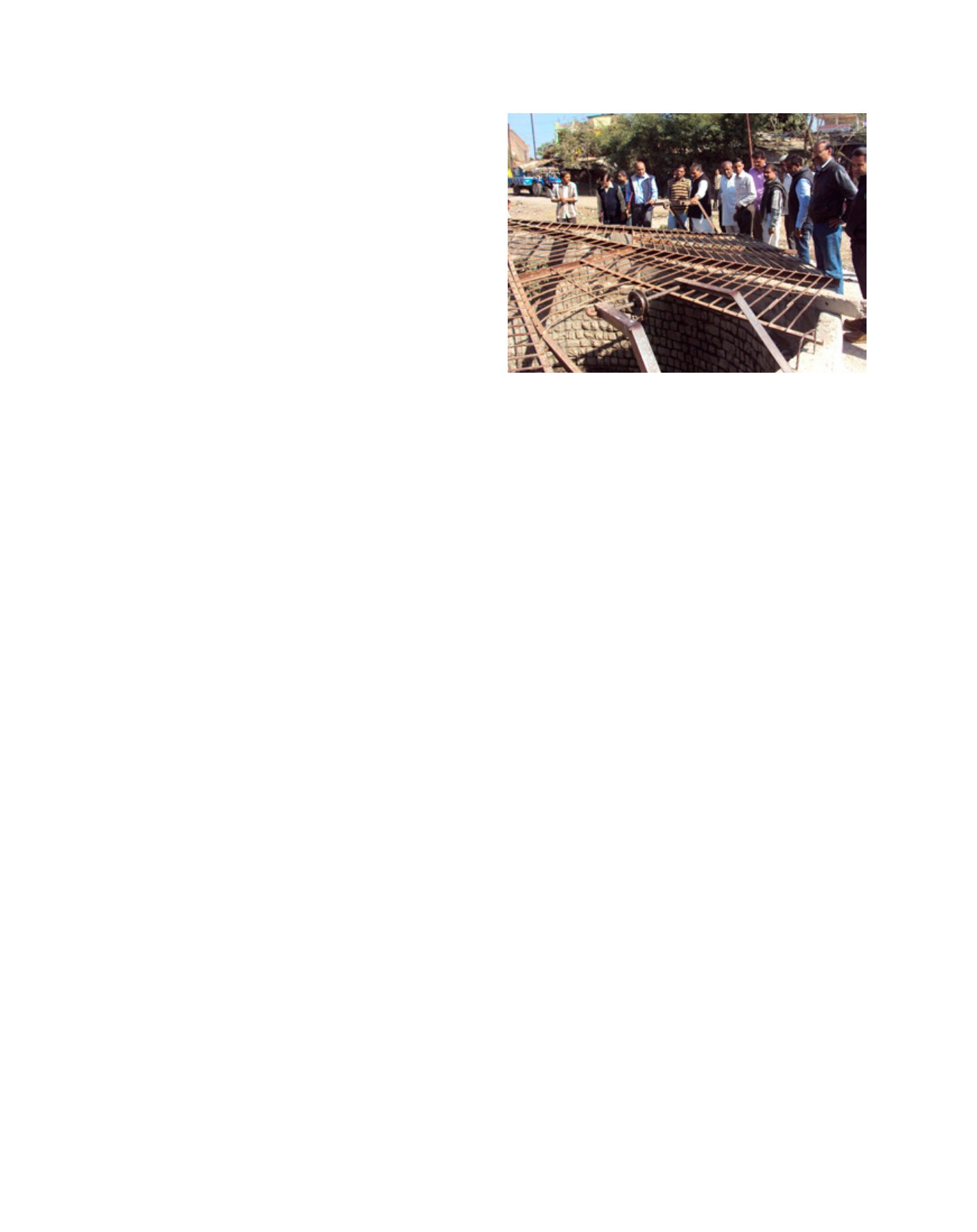

[
] 21
A B
et ter
W
or ld
also promotes inclusive development of water-efficient urban
infrastructure, making a huge contribution to better water
management and improving the efficiency of core services at
a lower cost. The mission includes a comprehensive policy
that defines smart cities as those that connect citizens,
data, devices and other objects to a centralised infrastruc-
ture network that is utilized for urban planning as well as
social and economic development. The financial framework
includes input from the Ministry of Urban Development,
Central Government, and the Special Purpose Vehicle (SPVs)
revenue model, with low risk for lenders and investors. It is
expected that a number of schemes in the smart city will be
taken up on a public/private partnership basis, with the SPVs
being central to this.
The smart city project has been developed to promote
efficient infrastructures with optimum usage of natural
resources. For instance, smart cities provide enhanced and
sustainable public amenities, especially designed to cope
with fluctuating numbers of visitors and a floating popula-
tion. This includes the installation of e-toilets (electronic
toilet systems) that are unmanned, automated and self-
cleaning, with a remote monitoring facility to check usage
and upkeep. These systems are solar powered and cloud
connected, enabling remote tracking of water quality and
of each pay-per-use transaction. Smart cities also provide
waste water recycling and Supervisory Control And Data
Acquisition (SCADA); smart metering; advanced leak detec-
tion; online quality monitoring; solid waste management;
Radio Frequency Identification (RFID) for the tracking of
vehicles; bio-methanation; waste to-energy technology;
decentralised waste processing; and water ATMs which are
automated water dispensing units, providing communities
with 24/7 safe water access.
Water trading with the use of advanced remote sensing
services, Australia
The programme of Water Trading and Economics in Australia
provides a successful step towards water efficiency, being
beneficial to various communities as water is distributed to
everyone – agriculture, industry and domestic – by demand.
Depending on the historical, political, legal, and economic
context of a community, establishing a water market may
be an appropriate solution for distributing scarce water
resources to meet increasing demand. Water trading systems
promote more efficient water allocation at a market-linked
price, acting as an incentive for users to divert resources
from low- to high-value activities. Under this system, a cap is
established, representing the total amount of water available
for consumption, consistent with sustainable levels of extrac-
tion. Individual users are then provided with an entitlement
to a share of the total available. Water entitlements are trad-
able so that ownership can change over time, and price is
determined by the value placed on water by many buyers and
sellers. Since the method is resource efficient, the Australian
government’s buy-back programme represents a cost-effective
means of acquiring water and transitioning the irrigation
sector to more sustainable levels of extraction. It is a flexible
method, implemented by many countries, and can be scaled
up or down according to need and available resources.
CO
2
reduction potential due to water efficient
infrastructure, Viet Nam
Viet Nam is implementing a water efficient infrastructure
with potential to reduce CO
2
emissions. This includes the
installation of water saving toilets and showers, measuring
the water used, time of usage, temperature and electrical
consumption of pumps, and establishing a model of energy
reduction from the hot-water supply to a shower. The tech-
nology uses the default model of CO
2
reduction calculation
for measurement, reporting and verification (MRV). A CO
2
reduction potential of approximately 16,000t CO
2
per year is
expected by popularising the use of the latest water-saving
toilet bowls.
Johkasou decentralised wastewater treatment system
(DEWATS), Japan
As documented in 2009 by the Japan Education Center of
Environmental Sanitation, a Johkasou is an onsite wastewa-
ter treatment system installed in the absence of a centralised
public sewage plant. It offers primary, secondary and tertiary
treatment, ensuring a biological oxygen demand (BOD)
level of below 20 mg/l, while also eliminating pathogens.
All household wastewater flows directly into a Johkasou
with the aim of improving water and sanitation throughout
the country as well as ensuring access to all, even in loca-
tions without a sewer line. A single unit provides service to
an individual building housing from 5 to 5000 people. The
wastewater is treated on site and can then be used for various
purposes. Johkasou technology now boasts treatment perfor-
mance equivalent to that of a centralised public sewage plant.
Japan’s Ministry of the Environment has a mandate to ensure
regular desludging, effluent monitoring and the provision of
a Johkasou facility to every household.
DEWATS leach pit sanitation technology, India
Leach pit decentralised wastewater treatment technology is
one of the oldest and most efficient sanitation technologies
available. It facilitates the infiltration of waste liquids and
gases into the soil while retaining and digesting excreta.
Construction is either of honeycomb brick or cement rings
with holes. The pits hold solid faecal matter in the same
Field survey and interaction with the community, local leaders and officers
in a small town in India, about water and sanitation conditions and facilities
Image: EEDS Bhopal
















